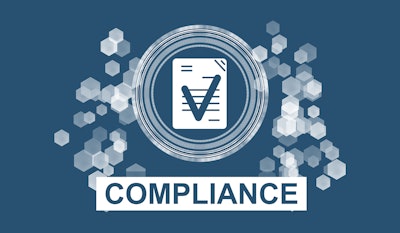
In today's highly competitive marketplace, the bar for product excellence from a consumer standpoint continues to rise. Regulatory compliance is a baseline, but not the sole measuring unit for consumer satisfaction. The pursuit of product quality, sustainability and consumer loyalty demands a shift beyond adherence to minimum standards and regulations.
Consumers want elevated brand, product and service experiences – they value enhanced usability, durability and sustainability. Meeting these higher expectations goes beyond (but absolutely does not dismiss) the functional aspects of an item. Brands must ensure their offerings exceed conventional compliance measures; those companies aspiring to differentiate already recognize the need to raise their standards to align with consumer expectations and market demands. It’s time to depart from the binary pass-fail metrics of standard compliance testing. How do we move beyond minimal compliance to meet those consumer expectations?
- Check your internal standards and reconsider quality, ethical sourcing, environmental sustainability and social responsibility goals
- Be transparent about your processes, sourcing and manufacturing practices
- Consider the entire lifecycle of your product, from production to disposal
- Foster strong relationships with suppliers, ensuring they adhere to ethical and quality standards
- Obtain relevant certifications that demonstrate your commitment to specific standards (e.g., Fair Trade, ISO standards, organic certifications)
- Conduct regular internal and external audits to ensure compliance with Int. standards
A third-party testing company can handle the added steps to ensure these standards are met, without putting a tremendous strain on your in-house team.
Third-party testing not only offers an outsider’s perspective to the ongoings of product development, from procurement to final product, but also transcends traditional compliance tests to evaluate products in real-world scenarios, keeping up with consumer trends. Third-party evaluations emphasize a holistic approach, assessing products beyond regulatory checklists, and may even offer their own certification to help boost the reputation of your brand. They scrutinize real-world usability, durability and overall user experience; working with the factory workers on the ground to ensure conditions are favorable to those manufacturing the products; ensuring the materials procured meet the actual sustainable/green milestones your company has set, without fear of being labeled as greenwashing.
Key aspects of third-party testing:
- Unbiased, Global-View Assessment: Dive deeper than regulatory mandates for a 360-degree analysis, examining how products perform in practical applications and sustainability
- User-Centric Focus: Emphasizing usability akin to consumer usage, products undergo rigorous testing, ensuring they meet evolving consumer needs and preferences
- Competitive Benchmarking: Comparative analyses against competitors provide brands actionable insights to enhance products, ensuring they offer superior functionalities in the market
- Product “Marks:” Delivering custom performance "labels" from independent inspections for use on products and/or product packaging, once successfully tested, can increase the immediate perceived value of products,
In today's market, surpassing regulatory standards is just the starting point.
Brands that prioritize user-centric experiences set a higher standard, standing out with superior quality, functionality and durability. Prioritizing actual product usability fosters trust and loyalty among consumers seeking reliable products. To align with ethical values, brands that emphasize sustainability resonate with environmentally conscious consumers, strengthening their brand image.
Consumer preferences constantly evolve, and product claims that only highlight minimal safety and less-focused sustainability metrics will lose in the long run. Reinforce your commitment to delivering products that not only meet but exceed consumer expectations, by implementing additional inspections and certifications at every step to meet your customers where they expect your product to be.


















